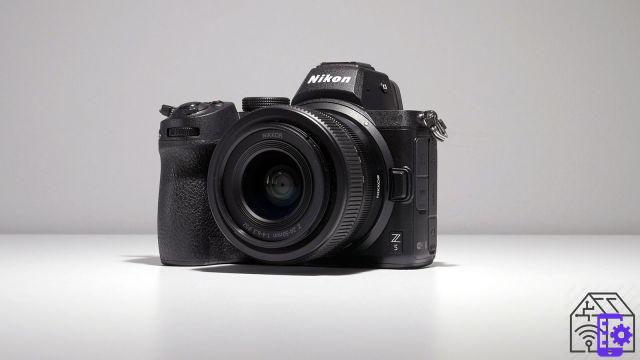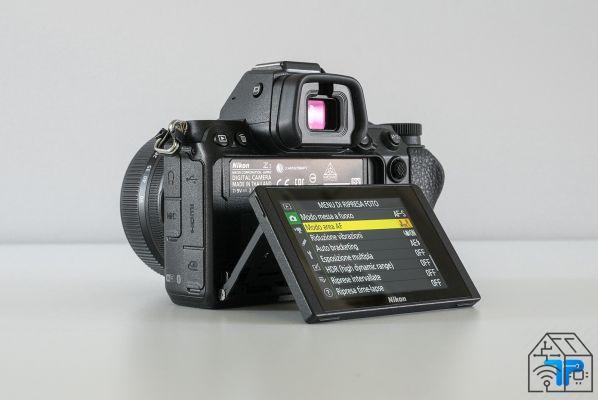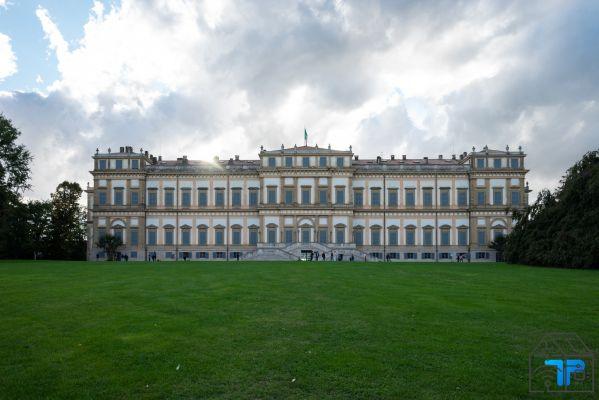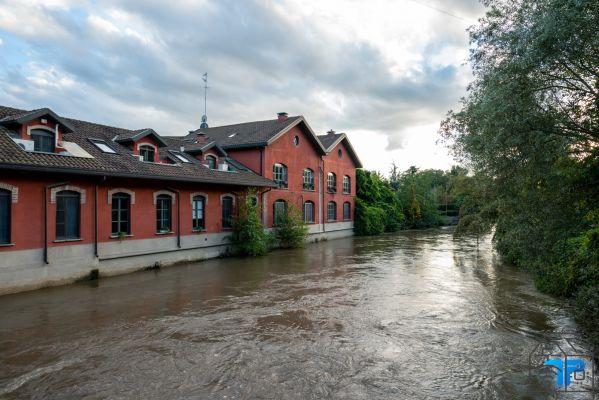
Nikon Z5 review
In the last two years, the world of full-frame mirrorless cameras has undergone a radical change with the overwhelming arrival of new players to undermine Sony's happy island. Canon, Panasonic and Nikon itself have made an appointment for the end of 2018, trying to question Sony's leadership.
Nikon, which looked like that a little further back, is getting busy and this year unveiled the first full-frame entry-level model, the Nikon z5, and a few days ago announced the arrival of Z6 II and Z7 II as well. They are moved to try to recover some ground compared to competitors who seem to be a step forward. This enriches the Nikon Z family, which can now surely have a say in him.

Nikon Z5 is the model with which to access the full-frame mirrorless world of the yellow and black house, but calling it entry-level is perhaps an understatement. It certainly ranks below the other sisters, but it can count on a sensor CMOS da 24,3MP, video 4K and stabilizzatore IBIS. Not to mention an ISO range that extends from ISO 100 to 51.200, a 273-point hybrid autofocus, over 3,6MP resolution electronic viewfinder, tropicalized body and more. If these seem like entry-level features to you, I think we will have to revise the meaning of this term.
I would add that the image processor is ordering the data stream EXPEED 6 which, however, despite being the same as the Z6, does not ensure the same continuous shooting rate. It will also be due to the memory cards, because in fact on the new mirrorless we find two slots, positive aspect, but only for SD cards. We give up on the XQD format but add a slot, a choice that I think is absolutely apt for the public to whom Nikon Z5 is dedicated.
Even the price issue does not make it an entry-level, but simply the least expensive of Nikon. Z5 is in fact for sale at a price of € 1.899 together with its kit optics, the Nikkor Z 24-50mm f / 4-6,3.
Camera body
Like its older sisters, Nikon Z5 is characterized by a large bayonet that allows more light to reach the sensor easily. Around theZ coupling a solid camera with dimensions close to those of the Z6 and Z7 was built. It is resistant to dust and rain, but the body is less robust because the core is not entirely made of magnesium alloy.
For those who are already familiar with the Z series, using this mirrorless will not be a problem. In addition to the dimensions, the arrangement of the controls is also almost identical. Of course, there are differences, first of all the absence of the second display, the upper one, which in reality only the professional user would struggle to give up.






Excellent and comfortable ergonomics, with a pronounced grip that ensures a solid grip and at the same time also reaches many of the buttons scattered around the body. Both those on the upper profile, such as ISO setting, exposure compensation and obviously the shutter button, as well as those on the back. In particular joystick and AF-On control which are the ones that are used most frequently are within reach of the thumb.
Speaking of the back, Nikon continues to offer a display that is not fully articulated. It is in fact a 3,2-inch diagonal touch panel, with a resolution of 1,04 million points and which is only tilting. We can therefore only tilt it up or down.
Discount Nikon Z5 + Z 24-50 + Lexar SD 64 GB 667x Pro Fotocamera ...
Nikon Z5 + Z 24-50 + Lexar SD 64 GB 667x Pro Fotocamera ...
- The large Z mount and 24.3MP full-frame CMOS sensor combine to deliver more detail, ...
- The Nikon Z 5 camera is compatible with all NIKKOR Z full-frame lenses. The NIKKOR Z 24-50mm lens ...
- AF coverage ensures smooth, fast and accurate focusing throughout the frame. The Z5 is equipped with ...
Overall it is an agile and practical camera to use of which I criticize only the display and the fact that a different solution could be found on a few buttons. Some keys are in fact very small and very close together, especially those around the multidirectional pad. Another aspect that does not convince me is the absence of a flash pop-up, which for the average user can be a valid help.
Usage and image quality
The 24,3MP sensor, which will probably be one of the last times we'll see it on a Nikon, iIn general, it offers detailed images with natural colors. In use, I appreciated the quality of the electronic viewfinder, not ideal for a photograph devoted to action due to the black-out time between one shot and the next, but it offers a faithful and detailed reproduction of the scene.
Good but not excellent system AF aboard Nikon Z5. As with the older sisters, there are some difficulties especially in tracking a subject. The performance is absolutely decent, but when compared to Sony or Canon it's hard not to notice any difference. The situation is different when we photograph a static scene, in which the different modes of acquisition of the focus point, from a single point to the totality of the framed area, are decidedly efficient. Through the joystick we can very quickly choose the point with ease a single point or an AF area and the fact that joysticks are increasingly present even in cameras considered entry-level I really like.





In general, the RAWs obtained with Nikon Z5 are rich in detail and show a very wide dynamic range and I feel I can say the same for JPEGs. The color rendition is very natural, although in some conditions the white balance is not perfect. This happens especially with artificial light, because outdoors and with natural light the results have always been very reliable.
Probably with a different optics from that of the kit, the results in terms of sharpness would be even better, but no light falls at particular edges or evident chromatic aberrations are to be highlighted. So overall the combination is certainly very interesting for those who want to approach the full-frame mirrorless world.











La gamut ISO Nikon's Z5 extends from 100 to 51.200 but can be forced up to ISO 102.400. Noise resistance is good up to ISO 3200, while the first defects appear at ISO 6400. At this value the noise is quite noticeable and there is also a loss of detail. However, up to ISO 12.800 the performance is still acceptable, while at higher values it is better not to shoot, unless absolutely necessary.
Nikon Z5: conclusions
There is no question, for it to be Nikon's top-priced full-frame mirrorless camera in the Z series, the cost is high. But it's not that competitors are offering solutions with these characteristics and quality at lower prices. For this I would like to be able to banish the term entry-level, at least for these full-frame mirrorless.
Also because the build quality and attention to detail make Nikon Z5 a truly satisfying machine overall and worth the money to invest to take it home. It could be an opportunity for those who love the Nikon brand but still hadn't had the courage to abandon the mirror due to the higher cost of the Z6 and Z7.
Another aspect that is sure to get the eyes of many more possible users on the Z5 is the fact that there are two SD card slots. By now we all certainly have several at home and not having to have the obligation to buy expensive XQDs is certainly an advantage.
If we limit ourselves to the body only, I am sure it could represent an excellent companion in many adventures, what remains some doubts is actually the kit optics. In the long run, a user could probably feel the need for something more powerful.
In conclusion, Nikon Z5 is certainly the step needed to expand the Z ecosystem, to which the new versions of Z6 II and Z7 II have recently been added. Nikon could now really have a say in the full-frame mirrorless market. The next step will be to offer truly hybrid products for photos and videos even at the lower end.

Nikon z5
Pro 
- Dynamic range
- Colori in JPEG
- Joystick AF
- Electronic viewfinder
- Excellent ergonomics
- Double UHS-II SD card slot
Cons 
- Shutter speed per second
- Lack of flash
- Video 4K
- Display not fully articulated


























